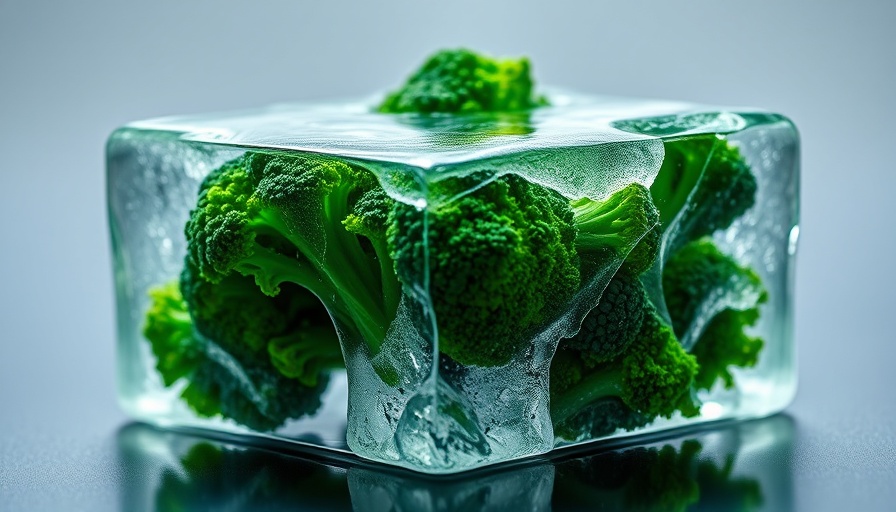
Understanding the Science of Freezing Food
Many of us have found ourselves in the kitchen pondering whether that leftover roast or bag of peas we forgot in the freezer can be safely refrozen. The science behind freezing food is a snowy landscape of proteins and moisture, and understanding how this process affects flavor, texture, and safety is key.
Water can freeze and thaw endlessly, but food isn't simple like water; it’s a complex arrangement of proteins, carbohydrates, and fats. When we freeze food, the process forms ice crystals that can alter its quality. This article dives into how and when you can refreeze food safely, ensuring it remains delightful and nourishing.
Is Refreezing Safe? Here’s What You Need to Know
It’s perfectly safe to refreeze food, provided it has been handled correctly. The USDA emphasizes the importance of keeping thawed food at a safe temperature below 40°F. Food should never thaw at room temperature, as this allows bacteria to thrive on the surface before the core is thawed.
For instance, while raw meat can be refrozen if it has been thawed in the refrigerator—because it hasn’t reached the danger zone of bacteria growth—it’s vital to note that once refrozen, the texture and taste may change. Cooking food from a frozen state can also yield excellent results for smaller items like chicken tenders or soups, while large cuts may struggle to cook evenly.
How Many Times Can You Refreeze Food?
The number of times you can safely refreeze food depends on several factors, including how it was thawed and its type. For raw meat, the USDA explains that as long as it remains below 40°F, you can refreeze it, but each refreeze introduces the risk of losing moisture and damaging the texture of the food.
As articulated by experts at the UMN Extension, if thawed food has stayed below 40°F for no more than three days, feel free to refreeze it. However, it’s essential to assess the quality of the thawed food—often it’s best to use it soon rather than refreeze.
Quality vs. Safety: Making the Right Decision
Even though you can refreeze food safely, you might not want to from a quality perspective. Foods like produce often lose their structure and flavor upon thawing and can become mushy once refrozen. For example, thawed strawberries may work well in smoothies but may not hold up in a pie after being refrozen.
- Fruits like strawberries or blueberries can be refrozen if they smell and taste good, but their texture may suffer.
- Cooked meals can be refrozen without significant quality loss, provided they are cooled quickly after cooking.
- Bakery items like cookies or bread can be refrozen but may lose their freshly baked goodness.
Tips for Refreezing Food Safely
Here are some tips to maximize the safety and quality of refrozen food:
- Ensure the food remains at 40°F or below during thawing.
- Use airtight packaging to minimize freezer burn, a condition that can affect texture and taste.
- Always label your food with dates to keep track of its freshness.
- When possible, refreeze in smaller portions to expedite the freezing process, thus maintaining quality.
What Foods Should Never Be Refrozen?
Some foods do not respond well to the freezing process and should generally not be refrozen:
- Ice cream and similar desserts can lose their creamy texture.
- Mayonnaise and cream sauces can separate and become unpalatable after thawing.
- Leafy greens often lose their crispness and can turn mushy.
Moving Forward with Confidence in the Kitchen
Food safety can sometimes feel overwhelming, but knowing when and how to refreeze food provides chefs and home cooks alike with confidence. By adhering to guidelines and trusting your judgment about quality, you can prevent food waste and enjoy the meals you love. Always prioritize safety, but don’t be afraid to get creative with leftovers, turning them into delightful new dishes rather than letting them go to waste.
So the next time you find that bag of shrimp or half-finished casserole, remember – refreezing can be a handy way to keep your kitchen running smoothly, as long as you do it safely!
 Add Row
Add Row  Add
Add 




 Add Row
Add Row  Add
Add 

Write A Comment